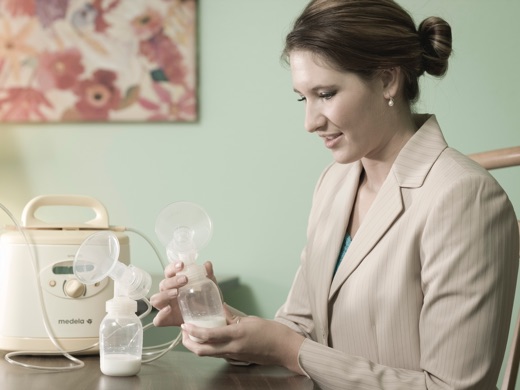- Plan to go back to work in the middle of your typical work week if you can. For example, if you work Monday through Friday, have your first day back be on a Wednesday. The first few days are likely to be the hardest as you figure out your new schedule and make adjustments.
- Write out your new daily routine. What time do you need to wake up? Are you breastfeeding or pumping in the morning? How long will it take you to get your baby ready for the day and dropped off? When do you plan on pumping at work? Having all of this written out beforehand can help you identify any challenges and adjust things as needed.
- Make a backup plan. Be sure that you know what to do if your baby is sick or your baby’s caregiver is not available on a day you have to work.
- Make a list of what you need to have in your pumping bag. You will need:
- Breast pump
- Flanges
- Tubing
- Power cord
- Milk storage containers
- Insulated bag with ice pack
-
Be ready to manage leaking. If you feel a tingle in your breasts, like your milk is about to let down, and you are not ready to pump or express it, you may be able to stop any leaking by pressing on your nipples. Try folding your arms across your chest over both breasts and pressing down firmly, holding it until the feeling passes.
- Bring extra breast pads, in case you leak anyway.
- Having an extra shirt is a great idea, too. Shirts with patterns tend to hide milk stains the best!
Breastfeeding Support 24/7: 855-550-6667




